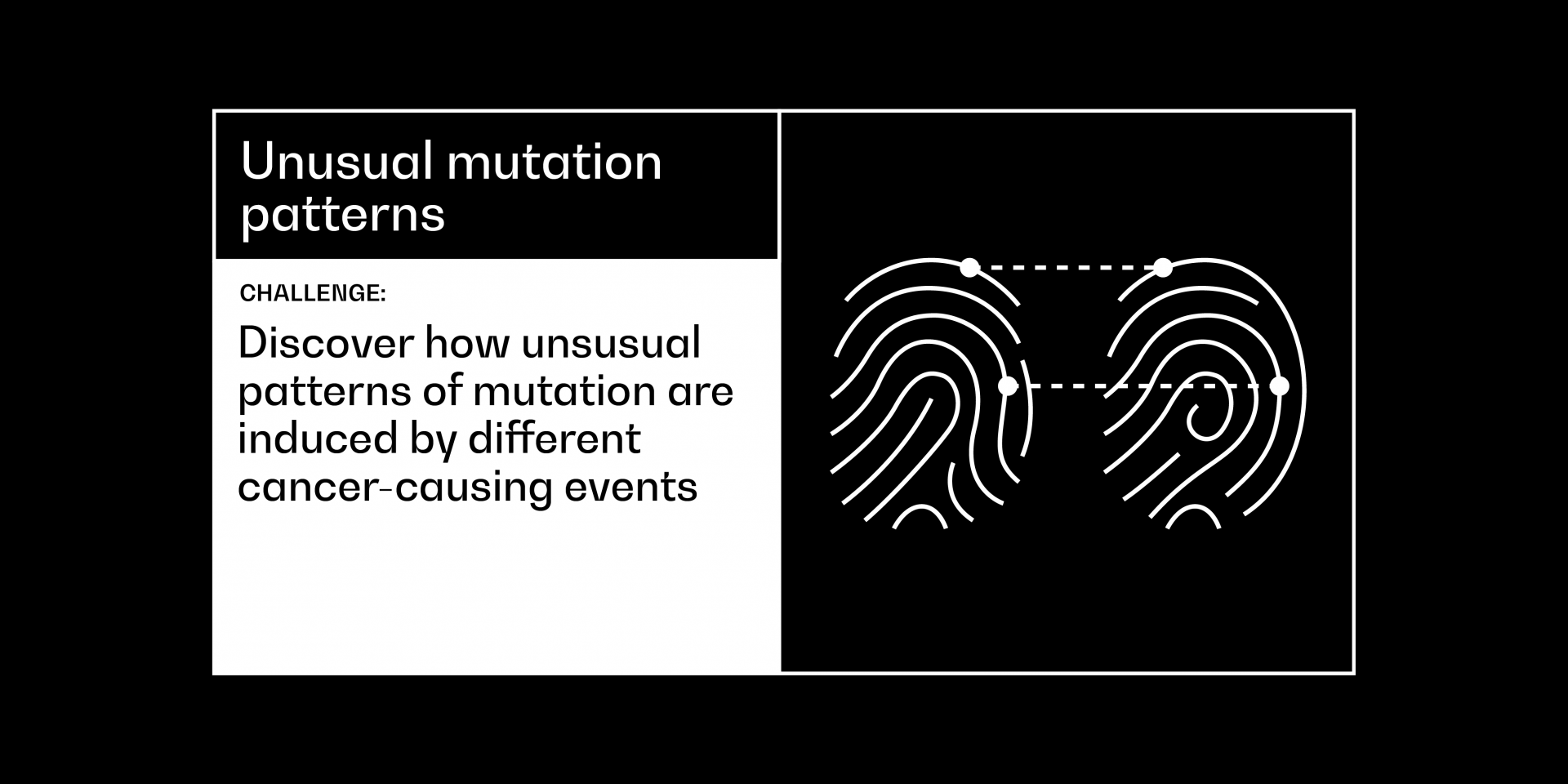
Unusual mutation patterns
Challenge: Discover how unusual patterns of mutation are induced by different cancer-causing events
ACTIVE TEAM: Mutographs
This was a challenge in an earlier round, we are not currently accepting applications for this challenge.
Context
Dangerous levels of exposure to a carcinogen will elicit specific patterns of DNA damage, both genetic and epigenetic, that can be analysed downstream if a tumour eventually develops.
We now know that these patterns of mutation can be used as flags to work backwards to identify exposure to both known and previously unknown carcinogenic agents, and in some cases to even pinpoint the actual location of exposure.
A classic example of this is the case of aristolochic acid, which was first identified as a carcinogen after a group of Belgian women developed cancer of the upper urinary tract after eating herbs as part of a weight-loss regime. As a result it was linked to the same cancers in other regional hot spots.
Barriers and opportunities
This Cancer Grand Challenge seeks to use a reverse approach to conventional epidemiology, starting with the tumour’s genetic material rather than beginning with an unusual pattern of cancer incidence.
There are huge opportunities to use such an approach to untangle the multiple mutational signatures in cancers whose origins are extremely complex or multifactorial, such as those caused by lifestyle-related factors such as obesity.
Vision and Impact
Ultimately this challenge would allow us to understand the mechanisms that led from insult to mutation, identifying new prevention targets to stop, delay, or weaken their impact. And by studying the proportion of the population with these signatures (the penetrance), we might also find individual variations in DNA repair or immune response that identify people at higher risk who would benefit from more targeted intervention.
Plain language summary: Why unusual mutation patterns?
We’d like to stop cancer before it starts – prevention is better than cure. However, we don’t yet know all the individual events that can induce cancer, and we need to better understand the effects on our DNA of the cancer-causing events we already know about.
Certain things in the world around us, such as tobacco smoke, cause cancer. They do this by triggering chemical changes inside cells, leading to errors in the reading of the DNA genetic code.
The patterns of these DNA changes are different for each cause (or ‘carcinogen’) – almost as if they are signing their names on our genomes – and scientists can identify known carcinogens from their chemical signatures.
But there are unusual signatures whose origins we don’t know, caused in ways we haven’t yet identified. And in cancers caused by factors such as obesity, there will be many different signatures, and we don’t yet know how to pick them apart.
So in the same way that a detective uses forensic evidence from a crime scene to identify a criminal, we need to work backwards to find these cancer-causing events, to prevent the cancers they’re causing.